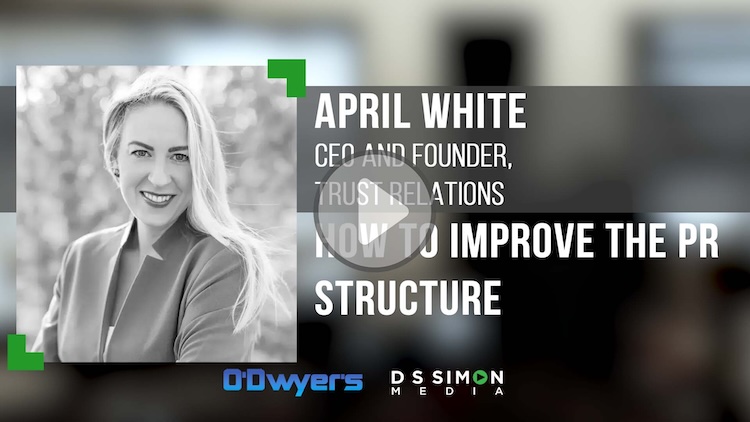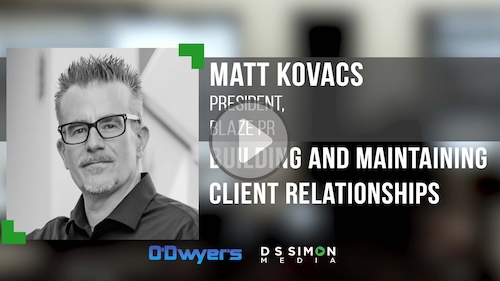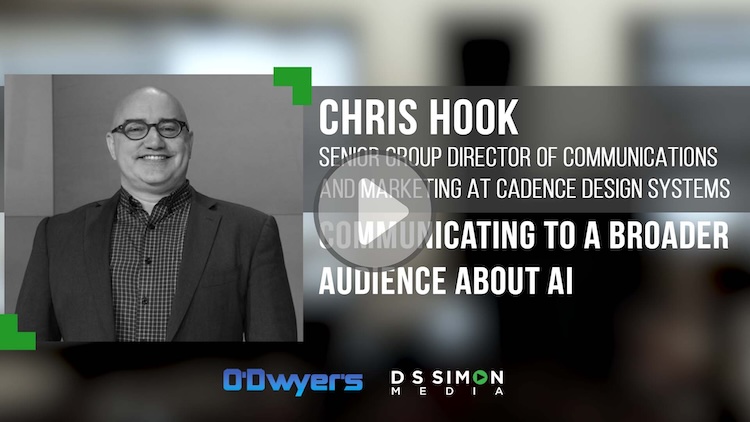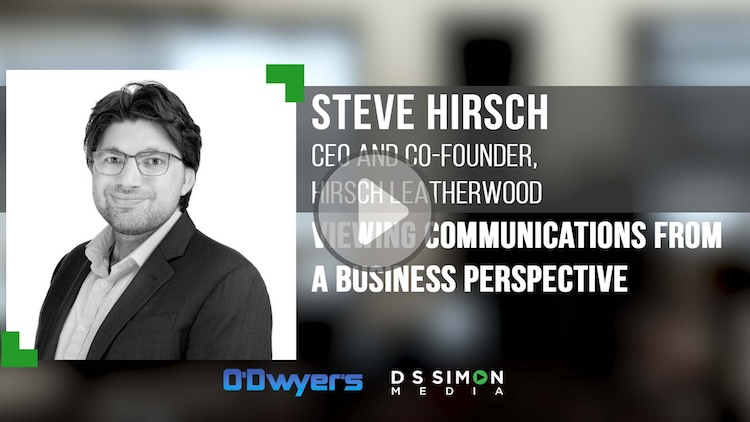 |
 |
| Eric Lebson and Ian Christopher McCaleb authored this piece. | |
For those of us who work in or around the media industry, and for any reflective consumers of media, McWilliam’s thoughts must almost seem clichéd. The great challenge we face every day is how to get media to pay attention to our clients’ various causes, many of which are important and relevant, and are as worthy of attention and support as some of the worst “above the fold” headlines of any daily newspaper.
Employing another cliché: Washington is perhaps the quintessential city of influence. It’s one where decisions that ripple across the entirety of the world are made, and one in which an entire industry of professionals who peddle their influence — including lobbyists, strategic consultants, public affairs firms, influence groups and others — spar and vie each and every day for narrative control.
The types of decisions made in Washington have broad implications. For example, a change in immigration policy could impact a university’s ability to attract and educate students from around the world. For a corporation, how the US manages its bilateral relations to a foreign country could impact the supply chain of raw materials or the high-technology products on which they and their customers and consumers rely. For a relief organization, the degree to which the US Agency for International Development is funded could impact the ability to feed thousands in the middle of an African drought or a South East Asian tsunami.
The American public is generally uninterested in the minutiae of these stories, but the companies involved take every last detail very seriously, which is why they staff Washington offices with government relations specialists and hire prominent former government officials as lobbyists or consultants.
While these are the classic ways in which Washington operates, the election cycle of 2016 is offering wholly new and particularly uncomfortable dynamics in areas of policy and public perception. More and more, substance is being overwhelmed by static, at a time when Americans are dually scared by and fed up with the ugliest forms of political posturing and rhetoric.
So how can anyone seeking to earn attention and understanding cut through all the noise? Those of us who do this for a living, including business intelligence practitioners, have to look beyond the traditional PR toolbox and cultivate new ways to raise awareness of an issue or cause. Among some of the ways in which we have found new success:
Show the enormity of consensus. Recently, the New York Times reported on 51 State Department officials who signed a petition calling on the Obama Administration to begin bombing Assad regime targets in Syria. Diplomats are not typically known for opposing a sitting President, and the large number of them doing just that became the headline of the story. Similarly, in March, 95 Republican national security officials signed a petition against Donald Trump’s voiced policies and presidential ambitions. One of the easiest ways to build momentum is to show that the issue has validators and that momentum already exists. This will naturally encourage others to jump on board.
Leverage an appealing spokesperson. Traditionally, the sort of message amplification we’re talking about would be achieved through the influence and cooperation of a Hollywood star or musical performer (Angelina Jolie or Bono), an innovative business leader (Elon Musk, Richard Branson or Bill Gates) or a personality to whom people look for trends (such as any of the Kardashians, if one considers the most vapid manifestations of trendiness). Watching the evening news for five minutes, however, will confirm that the most attention-grabbing stars of this era are, for the moment, at least, Donald Trump and Hillary Clinton. During this election season, and more than ever before, presidential candidates are directly rivaled with other public personalities, meaning, perhaps, that the best way to raise an issue is to convince one of the candidates to first care and then speak about it. This is easier said than done, of course, because the candidate will have to be convinced that he or she stands to gain something concrete from taking up your issue or cause. But should you manage to break through with a top-tier candidate, you should be mindful that the attendant risk of politicizing your issue could place it squarely in the middle of a political mud fight. At the very least, the profile of your issue will have been raised, affording other opportunities after the election cycle has passed.
Hitch your wagon to someone else’s profile. There are so many groups in Washington that have invested time building an apparatus to advance their cause. Three of the more prominent groups, The American Israel Public Affairs Committee (founded in 1963, $77.709 million net revenue and $83.308 million in net assets in 2014), the American Association of Retired Persons (founded 1958, $1.399 billion net revenue and $1.041 billion in net assets in 2014) or the National Rifle Association (founded 1871, $310.491 million net revenue and $42.599 million in net assets in 2014) have money, organization, political influence and media attention. Finding a way to show how your issue is a common cause with their issues may afford you the ability to leverage their influence and profile.
Be edgy. In the midst of so much noise, finding a way to appeal in ways that will not only resonate but will be retained in memory is your greatest task. It’s not nearly so important that people remember your cause as it is that they’ll remember the unique thing about it that draws them back and prompts them to share it with others. For example, the Washington media market has been bombarded with a campaign to reform a little known government agency, the Consumer Financial Protection Bureau. The campaign has made allegations of gross misconduct, corruption, and racism and has done so using a memorable series of videos that allege the head of the organization wants to be elected governor of Ohio. The relevance of this is not whether it’s true or not; it is memorable because it’s “edgy.”
Go to where the people are. There’s a bias in intelligence analysis called “mirror imaging,” which suggests that an analyst assumes the subject being analyzed has the same general perspectives and behaviors as the analyst. The same is true of Washington insiders who think that every solution comes from inside the Beltway. A simple review of the readership rates of elite publications — The New York Times, The Washington Post, The Los Angeles Times, The Wall Street Journal — shows that each is generally far below the readership of Guns & Ammo, Entertainment Weekly, Sports Illustrated and People Magazine. In this age of viral media, watching Internet statistics shows something similar every time a funny video of a cat gets millions of hits, while an impassioned speech on some significant public policy issue gets far less attention. If the point is to raise the profile of an issue so you can garner support, knowing where people go for their information and entertainment has got to be part of the foundation of your strategy.
There’s more noise blaring out of Washington today than ever before, and cutting through this noise has become the great challenge of the PR and public affairs industry. While we as practitioners undertake the age-old methods of developing a narrative, media coaching, and distributing press releases on news about a company or organization, we must also make strategic recommendations to our clients on how to get the message out. The above tactics are but a few that can be successful in this overly saturated media environment.
* * *
Eric Lebson and Ian Christopher McCaleb are business intelligence practitioners at LEVICK, a public affairs and crisis communications firm. They routinely assist foreign clients with laying the groundwork to anticipate and navigate political risk scenarios that impact their bottom line.










 Have a comment? Send it to
Have a comment? Send it to 
No comments have been submitted for this story yet.